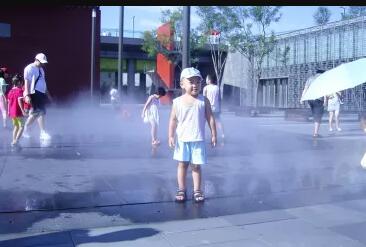How Fog Fountains Work
Fog fountains, also known as mist fountains, have gained popularity as captivating and enchanting additions to indoor and outdoor spaces. These mesmerizing installations create an ethereal ambiance by combining water and fog to produce a visual spectacle that is both soothing and visually stunning. In this article, we delve into the inner workings of fog fountains, exploring the science, technology, and artistic magic behind these captivating creations.
The Science of Fog Generation
At the heart of a fog fountain lies the science of fog generation. Fog is essentially a collection of tiny water droplets suspended in the air, creating a misty and opaque appearance. Fog fountains use ultrasonic technology or pressurized air to break down water into these fine droplets. Ultrasonic foggers utilize high-frequency vibrations to transform water into mist, while pressurized air systems force water through nozzles at high velocities, creating a misty spray.
Water Reservoir and Pump
A fog fountain typically comprises a water reservoir and a pump. The reservoir holds the water that is used to generate the fog. The pump draws water from the reservoir and delivers it to the fog generation mechanism. As water is released through the fogging system, it is transformed into a fine mist that rises and combines with the surrounding air to create the signature fog effect.

Ultrasonic Transducer or Nozzles
For ultrasonic Huifeng fog fountains, an ultrasonic transducer is employed. This device produces high-frequency vibrations that agitate the water, causing it to break into tiny droplets. The generated fog is then released into the air, creating the misty atmosphere. In pressurized air systems, nozzles play a crucial role. These nozzles atomize the water, breaking it into small particles that disperse into the air, forming the fog.
The Role of Lighting and Ambiance
Fog fountains often incorporate LED lighting to enhance their visual impact. These lights are strategically positioned to illuminate the mist, creating an enchanting interplay of light and fog. The mist particles catch and refract the light, resulting in an ethereal display of colors and patterns. This combination of fog and lighting transforms the fountain into a captivating focal point, evoking a sense of wonder and tranquility.
Creative Applications
Fog fountains find applications in various settings, from indoor spaces such as homes, offices, and commercial establishments to outdoor venues like gardens and public parks. Their versatile and artistic nature makes them popular choices for enhancing aesthetics, creating serene environments, and adding an element of surprise to spaces. Additionally, fog fountains are often used in theatrical productions, exhibitions, and special events to create dramatic effects and evoke specific moods.
Maintenance and Care
Proper maintenance is essential to ensure the longevity and performance of fog fountains. Regular cleaning of nozzles or transducers prevents clogs and ensures optimal fog generation. Water quality also plays a role, as impurities can affect the efficiency of the fogging system. Routine checks of water levels, pump functionality, and lighting components help maintain the fountain's allure.
Conclusion
Fog fountains are a captivating fusion of science, technology, and artistry, enchanting audiences with their ethereal mist and mesmerizing lighting. By harnessing the principles of fog generation and cleverly integrating lighting elements, these installations create immersive and enchanting environments. Whether indoors or outdoors, water fog fountains infuse spaces with a touch of magic, inviting us to pause, reflect, and marvel at the wondrous interplay of water, air, and light.


